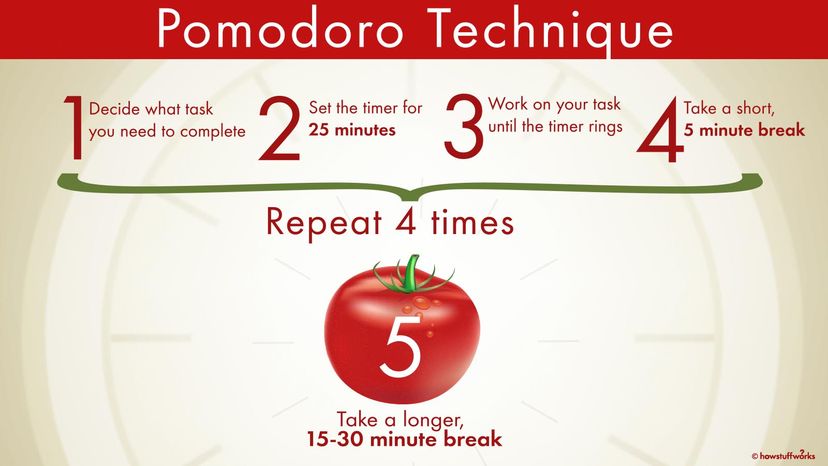In the digital age, you can never have enough content. Whether it’s 24-hour news cycles, unlimited access to music, or the growing number of streaming services, we’ve trained ourselves to constantly crave something new.
In fact, the human attention span shrank 25% over the past few years.
But as a content creator, you’re probably already well aware of this. The unrealistic demand for content can quickly become mentally, emotionally, and physically taxing on your team.
There’s always more you could be creating for your audience – especially when your content is tied directly to business goals.
If you find yourself falling behind and missing deadlines, it could be due to several factors:
- Deadlines are unclear
- Deadlines are not enforced
- Workloads are difficult to balance in an endless stream of content requests
On the other hand, maybe you have been hitting publishing deadlines, making excellent content, and leaving your audience wanting more. As your team and content calendar grows, so does the need to stay on top of deadlines.
No matter what’s causing you to miss deadlines consistently, these tips will help you get your team back on track.
Common reasons for missing deadlines
Missing deadlines isn’t always a sign of procrastination. It’s important to stay positive, be patient, and allow your team to voice their concerns. Since they may be working in the weeds a bit more than you, they can provide valuable insight on any bottlenecks you may be facing.
Beyond that, it may be time to overhaul your editorial calendar, scheduling techniques, or your entire content process. But first, you’ll have to identify the root of the problem.
Let’s take a look at some common issues and how to address them.
1. A lack of defined project management
Spending time and energy on project management is becoming more and more popular – and for good reason. Companies with under 100 employees lose $420,000 a year due to poor communication.
That said, project management consumes up to 20% of the budget for each project. With so much on the line, you’ll be losing money and missing deadlines if you don’t choose wisely. Here are a few of the most popular project management approaches to consider.
Agile
Software developers created Agile project management to improve and humanize the development process. This flexible or “Agile” approach to development revolutionized SaaS – and project management as we know it.
The Agile Manifesto and its core principles are worth the read. But at its most basic level, Agile project management is about focusing on people, developing better products, listening to customers, and constantly looking for ways to improve. It’s a departure from the rigid ways of Waterfall project management.
Today, engineers, web developers, and creative teams use Agile. Content teams can find value in this method because it helps them adapt their existing content as information changes and evolves.
Scrum
In Scrum, a team lead known as the Scrum Master breaks work into 2-4 week focus periods known as sprints. At the end of a sprint, the Scrum Master will lead a sprint planning meeting to agree on new tasks. The team will then review the Sprint, make adjustments, and deliver the project. Along the way, they will also check in with all team members to discuss any roadblocks they might experience.
Unlike Agile, Scrum is a methodology that prides itself on focus. Instead of ebbing and flowing as goals change during a sprint, Scrum is about knocking out tasks from an agreed-upon list one by one.
Kanban
Kanban is the Japanese word for “signboard.” It’s a perfect name for a project management style that emphasizes visualizing work with task “cards.” Kanban boards are usually broken into different columns based on the stages a task will move through before completion. You might name them things like:
- Brainstorming or Icebox
- Backlog
- To-do
- Doing
- Finished

To see this format in action, check out tools like Trello and Hubstaff Tasks.
Waterfall
The Waterfall method strives to define project requirements from the start. From there, work cascades from phase to phase. These phases flow into one another seamlessly (hence the waterfall analogy).
This approach is common in teams that have dependencies. For example, a creative team needs a concept before drafting a copy or creating a design. If you know that certain steps have to be completed before another can start, Waterfall works well.
2. Reluctance to adopt technology
Even the best project management methodology is nothing without the right tools. Whether you go with Agile, Waterfall, Kanban, Scrum, or another method, you’ll need to be able to pair it with great technology.
If you can’t decide on a methodology, tools like Hubstaff Tasks allow you to work from multiple views. You can switch between Kanban boards or Sprint and Timeline views. This gives you the chance to try different project management styles until you find the right fit for your team.
If you’re reluctant to trust software for task management, you’ll likely have some issues with deadlines.
Tools that send automated reminders about upcoming deadlines can save everyone so much time. Virtual Sprint updates, comment sections, and other tools help your team stay engaged and organized.
But too many unnecessary reminders can actually hurt productivity – which leads us to the next issue:
3. Too many distractions
Committing to a project management style will help you align your team and finish deliverables on time – but it’s only half the battle. In an era ripe with distractions, finding time to complete work is becoming increasingly difficult.
That’s why a lot of teams are implementing focus time. Focus time allows individuals to block out a couple of periods a week on their calendars for distraction-free work.
Each person can choose whatever time blocks they want. During these hours, they turn off notifications and close their office doors – in-person or virtually – to focus on high-priority tasks.
A lot of people fear that implementing focus time limits the possibility of meeting with your team. It’s important to note that this time can fluctuate from week to week. You might have to forgo your focus time in emergency scenarios, too.
That said, all the sprint planning and technology in the world won’t help with deadlines if you don’t have time to complete your work. This concept allows you to do just that.
3. Poor time management
Let’s say you have a set PM approach, software you’re using to keep track of tasks, deadlines assigned, and workloads balanced. You’ve set your team up for success through better planning. And yet, you’re still missing deadlines. Here’s where time management comes in.
If the focus time concept doesn’t work for you or someone on your team, there are plenty of other time management approaches to help maximize productivity. Encourage each team member to find a method that works best for them — or create their own.
Below are a few examples of some popular methods.
Pomodoro Technique

The Pomodoro Technique was created back in the 1980s by Francesco Cirillo. Its name is derived from the Italian word for tomato because Cirillo used his tomato-shaped kitchen timer to help him work in short, 25-minute bursts.
To use this method, take 5-minute breaks between 25-minutes bursts. After four of them, take a half-hour break.
Getting Things Done (GTD)
The simple GTD method was created back in 2001 by productivity consultant David Allen. This process involves writing down your thoughts and molding them into tasks. You can then assign time increments for each task and knock them out one at a time.
Time Blocking
Time blocking is just as simple as it sounds. Use your calendar to block out times to work on specific tasks. Don’t multitask during these time blocks. Try to focus on the work you have planned and eliminate any possible distractions.
5. Too much of an emphasis on perfection
Often, we are our own worst critics. If you’re still struggling with productivity, you might need to lower your own standards. Don’t obsess! Focus on finishing the job and getting to MVP (a minimum viable product) first.
Seth Godin’s advice is to focus on completing projects — not perfecting them. Here are a few tips:
1. Write down the deadline. Publish on this date whether it’s perfect or not.
2. Share your ideas so everyone can see them. Once the critique due date passes, no one else is allowed to have eyes on the project.
3. Remind yourself that a project is finished if it meets expectations, stays under budget, and is ready on time.
Perfectionism is an admirable trait of many successful people. But too much emphasis on perfection can lead to burnout, and as the proponents of Agile point out, a lack of shipping.
6. Burnout
One of the most overlooked challenges of managing a content team is writer’s block. As much as we hate to admit it, productivity and creativity are not directly correlated.
In fact, some argue that an obsession with productivity can stifle creativity and innovation. We’ve all heard stories of rock stars writing songs in under an hour. But there are plenty of works that took a long time to complete.
When it comes to managing creatives as a technical or non-creative professional, it can be hard to empathize with these creative blocks. But sometimes, you really do need to let your teams relax and take a break.

What might work best here is setting up the framework for success with plenty of room for creativity to happen. Each person will find their own creative stretches, so make sure your project plan allows for this.
The solution: take breaks and track them
So how can you ensure that breaks don’t spiral into extended spurts of slacking off? You might want to consider a proof-of-work tool.
Companies around the globe use time tracking software with optional screenshots, productivity tracking, and other useful features to ensure that their teams are focused on the right work.
Some tools even allow you to view activity scores and send achievement badges to your teams. This way, you can gain clear, tangible insights into your team’s productivity.
Conclusion
With these tips, you can have your content marketing team firing on all cylinders. It’s never too soon to start tracking time, implementing new project management strategies, and improving communications with your team.
But remember, focus time, breaks, and distancing yourself from perfectionism are equally as important when it comes to content publishing.
Collaborate more efficiently, publish faster
Altis simplifies the publishing process, and enables effective collaboration between you and your content marketing team. Dive into Altis.

